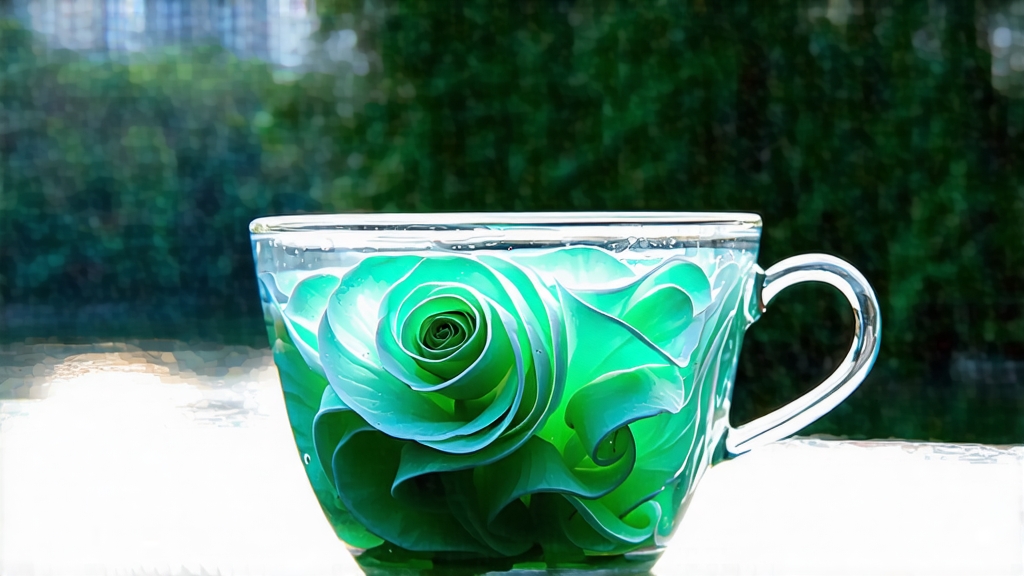
Tucked between the mist-laden hills of Dongting East Mountain and the gentle shores of Taihu Lake in Jiangsu Province, Biluochun—literally “Green Snail of Spring”—has charmed Chinese scholars, emperors, and now global tea lovers for over a thousand years. Its tiny, spiral-shaped leaves may appear unassuming, yet they carry one of the most fragrant and nuanced profiles in the entire green-tea canon. To understand Biluochun is to listen to a soft spring whisper that begins in the orchard-like tea gardens of Suzhou and ends in the quiet focus of a gaiwan half a world away.
Historical roots
The first written record appears in the Tang Dynasty’s “Tea Canon” of Lu Yu, but the name Biluochun was supposedly bestowed by the Kangxi Emperor (r. 1661-1722) after he tasted the tea during a southern inspection tour. Enchanted by the curling shape and the sudden burst of fruity aroma, he replaced the vulgar original name “Xia Sha Ren Xiang” (literally “scary fragrance”) with the elegant “green snail spring.” From that moment the tea became a tribute item, carried northward on the Grand Canal in sealed bamboo tubes lined with orange peel to preserve its delicacy.
Micro-terroir
The terroir is inseparable from the flavor. Dongting’s hills are volcanic, porous, and rich in micro-elements; nights are cool while days are mild, slowed by lake moisture. Within the tea rows grow peach, plum, and apricot trees whose blossoms drop petals that decompose into the topsoil. The interplanting is deliberate: fruit trees provide shade, regulate humidity, and share their floral volatiles with the tea buds, creating Biluochun’s signature “orchid-and-apricot” note impossible to replicate elsewhere.
Harvest calendar
Authentic Biluochun is picked only fifteen mornings each year, beginning when the lake fog is thickest—usually between Grain Rain (April 20) and the end of the month. Pickers seek the mythical “one bud with one half-open leaf” measuring 1.5–2 cm, a size that disappears between thumb and forefinger. Experienced eyes discard any bud whose leaf has already unfurled; that fraction of a millimeter determines whether the finished tea will taste like sweet pea or like boiled spinach.
Craft: the 10-step spiral
Within four hours of plucking the buds enter the village workshop where a master who has trained since childhood orchestrates ten steps: withering, primary firing, rolling, first spiral-shaping, low-temperature rest, second spiral-shaping, scent-absorption, final firing, cooling, and selection. The most iconic phase is the hand-firing on a cast-iron pan maintained at precisely 120 °C. The master uses bare fingers to press, rub, and toss the leaves for eight minutes, reducing moisture from 75 % to 30 % while coiling each bud into a tight spiral. A single lapse in rhythm can scorch the leaf or snap the tip, so the workshop is silent except for the soft hiss of evaporation and the occasional crackle of a wayward stem.
Chemical alchemy
The quick, high heat deactivates polyphenol oxidase within 90 seconds, locking in the vibrant chlorophyll that gives the liquor its jade glow. Simultaneously, amino acids—especially L-theanine—concentrate, while monoterpene alcohols (linalool, geraniol) formed during the brief withering phase survive the firing, yielding the tea’s honeyed floral lift. The result is a rare balance: the grassy snap of Japanese sencha without its oceanic edge, and the chestnut sweetness of Longjing without its chestnut astringency.
Grades and market reality
Chinese national standards divide Biluochun into five grades: Supreme, Special, Grade 1, Grade 2, and Grade 3. Supreme requires 60,000 buds per 500 g and must be 100 % hand-crafted within Dongting East Mountain. Counterfeits abound—some producers import Sichuan or Guizhou buds harvested in early March, machine-roll them, then scent with artificial peach flavor. Authentic Supreme Biluochun is never cheap; in 2023 pre-Qingming lots sold at auction for USD 2,400 per 500 g, yet the same leaves yield thirty brews, bringing the cost per cup below that of a café latte.
Water philosophy